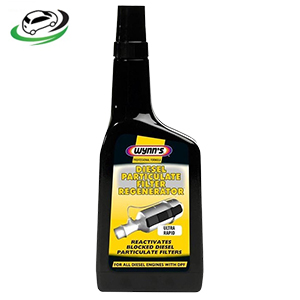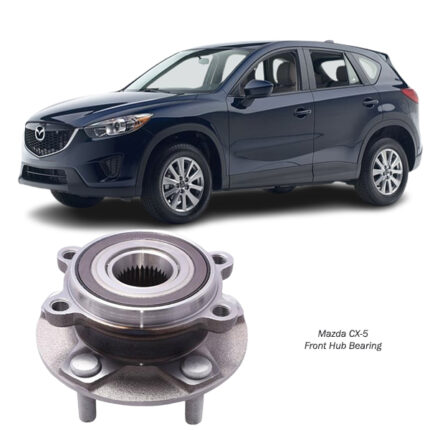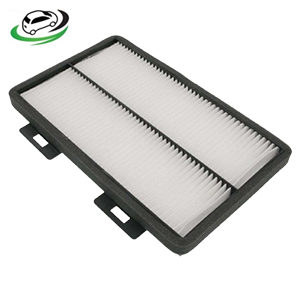Get Mazda Tribute Cabin Filter Assy E112-61-J6XA in Kenya
The Cabin Filter Assembly, often referred to as the Cabin Air Filter, is a crucial yet commonly overlooked component of a vehicle’s HVAC (Heating, Ventilation, and Air Conditioning) system. It plays a vital role in maintaining air quality inside the vehicle by filtering out dust, pollen, smog, and other airborne pollutants before they enter the cabin.
What is a Cabin Filter Assembly?
The Cabin Filter Assembly is typically made of pleated paper, cotton, or synthetic material housed within a plastic or rubber frame. It is designed to trap fine particulates from outside air before that air is directed through the vehicle’s ventilation system. The assembly may include a filter housing or bracket depending on the car model.
Located usually behind the glove box, under the dashboard, or under the hood near the base of the windshield, the cabin filter is essential for ensuring that the air passengers breathe is clean and healthy.
Functions of the Cabin Filter Assy
-
Air Filtration:
The primary role of the cabin filter is to clean the air coming into the cabin by removing particles like dust, dirt, pollen, mold spores, bacteria, and exhaust gases. -
Protection of HVAC System:
It prevents dirt and debris from clogging the HVAC system, which could otherwise reduce airflow or damage the heater and air conditioner components. -
Improved Airflow and Efficiency:
A clean filter maintains optimal airflow through the AC and heating system, allowing the system to work efficiently without strain. -
Odor Control (in Charcoal Filters):
Some cabin filters are made with activated carbon or charcoal, which helps absorb odors, exhaust fumes, and harmful gases.
Advantages of Using a Good Quality Cabin Filter
-
Cleaner Cabin Air: Traps allergens, pollutants, and harmful particles, making the in-cabin air safe for passengers, especially those with allergies or respiratory conditions.
-
Enhanced HVAC Efficiency: Maintains smooth airflow, reducing strain on the AC system and improving fuel efficiency over time.
-
Longer HVAC Life: Reduces dust and debris build-up in the heating and cooling system, which helps prevent costly HVAC repairs.
-
Comfortable Driving Experience: Maintains a fresh-smelling and comfortable environment inside the vehicle.
Disadvantages of Using a Bad or Worn-Out Cabin Filter
-
Poor Air Quality: A clogged or damaged filter allows dust, allergens, and pollutants into the vehicle, causing discomfort or health issues.
-
Reduced HVAC Performance: Restricted airflow forces the HVAC system to work harder, reducing its effectiveness and increasing energy consumption.
-
Foggy Windows: A bad cabin filter can hinder the defogging function, resulting in poor visibility during humid or cold weather.
-
Musty Odors: A dirty filter may trap moisture and bacteria, leading to unpleasant smells inside the car.
-
Increased Wear on Blower Motor: Strain from poor airflow can overwork the blower motor, potentially leading to early failure.
Signs That Your Cabin Filter Needs Replacement
-
Reduced Airflow from Vents: If you notice weak air coming from the vents, the cabin filter could be clogged.
-
Unpleasant Odors: A musty or moldy smell inside the vehicle is a common sign of a dirty filter.
-
Foggy Windows: Reduced ventilation can make it hard to clear fog from the windshield and windows.
-
Increased Allergies or Sneezing: Dust and pollen may circulate more freely, especially if passengers start sneezing or showing signs of allergies.
-
Noisy Ventilation System: An overworked blower may sound louder when trying to push air through a clogged filter.
How to Replace a Cabin Filter Assy
Replacing a cabin filter is a relatively simple maintenance task that varies slightly by vehicle make and model. Here’s a general step-by-step guide:
Tools Needed:
-
Screwdriver (if necessary)
-
New Cabin Filter Assembly (OEM or aftermarket)
Steps:
-
Locate the Filter:
Most vehicles have the filter located behind the glove box. Others might have it under the dashboard or in the engine bay. -
Remove the Cover or Glove Box:
If it’s behind the glove box, gently detach it or lower it using side clips. Some models might require removing screws. -
Access the Filter Housing:
Open the filter compartment by releasing the tabs or unscrewing the cover. -
Take Out the Old Filter:
Pull out the dirty filter and check its condition. Note the direction of airflow marked on the filter. -
Insert the New Filter:
Place the new filter in the same orientation as the old one. Make sure the airflow direction matches the system’s flow. -
Reassemble the Housing and Glove Box:
Close the compartment, reattach the glove box or panel, and ensure everything is secure. -
Test the System:
Turn on the AC or heater and check for airflow and any unusual noises or smells.
How Often Should a Cabin Filter Be Replaced?
Most vehicle manufacturers recommend replacing the cabin air filter every 12,000 to 15,000 kilometers, or once a year, whichever comes first. However, in dusty or polluted environments (like cities or off-road areas), more frequent replacement may be necessary.
Tips to Maintain a Cabin Filter Assy
-
Inspect it during regular service intervals.
-
Clean the filter housing area when changing the filter to avoid contamination.
-
Choose high-quality or OEM filters, especially ones with activated charcoal for better odor and gas filtration.
-
Avoid running the AC in “recirculation mode” for extended periods in areas with poor outside air quality.
Types of Cabin Filters
-
Particulate Filters:
The standard type that traps dust, pollen, and other fine debris. -
Activated Carbon Filters:
Contain a layer of charcoal to absorb harmful gases and odors. -
Electrostatic Filters:
Use static charge to capture very fine particles and allergens.
Each type has its own advantages, and choosing the right one depends on your driving environment and personal preferences.
Follow us on Facebook for more parts.



